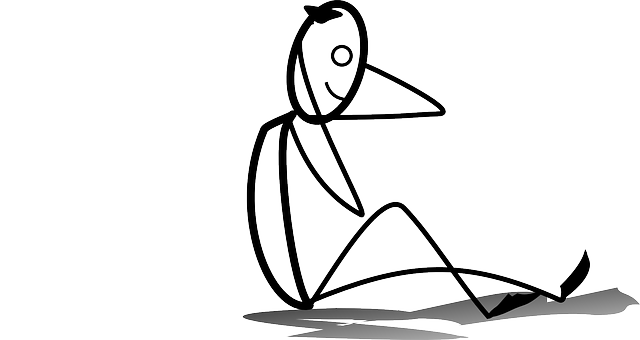That’s right.
As the title says, just because you’re sore the next day doesn’t mean you had a good workout.
The proper term for that all-too familiar day-after-a-workout muscle soreness is DOMS – delayed onset muscle soreness.
You may get DOMS regardless if you had a good workout or not because it seems to manifest itself the most through eccentric, unaccustomed exercise[1].
Eccentric exercise – when the muscle fibres lengthen (ie. the lowering part of the push-up when your body decends towards the ground).
There are studies that actually have shown that concentric exercise does not produce DOMS[2].
Concentric – when the muscle fibres shorten (ie. when you push up in a push-up).
In other words, if you performed just the upwards motion of a push-up, you wouldn’t actually get DOMS.
The problem is, you have to perform the eccentric portion of the push-up if you intend on doing a push-up routine that consists of more than 1 rep.
Another example of why DOMS is not a good indicator for a good workout is if you have been a regular attendee to my classes, then you will no doubt feel the initial extreme DOMS even up to 5 days after. But as you continue to do the class, two things happen:
1) Your form improves and thus; the level of intensity in your workout goes up by making it harder for yourself;
2) DOMS goes away.
This is due to the Repeated-Bout Effect which states that each subsequent bout of exercise (same exercise as the first time) will have a protective effect on your muscles and will show less swelling and muscle soreness, faster recovery time for muscle strength and range of motion[3].
So you see, just because you no longer experience DOMS anymore, doesn’t mean the workouts aren’t effective. On the contrary, they are probably even more effective as your skill for performing the exercise increases and you are able to work at a higher intensity.
And if you’re wondering if doing stretches and warming-up before exercise will reduce DOMS, think again… Studies show there is zero effect for preventing or even reducing DOMS[4].
As for saunas, massages, hot baths, low-intensity activity, the jury’s still out on whether it helps at all in recovery from DOMS.
Well, there you have it. The next time you experience a round of serious DOMS, just sit back and enjoy it while it lasts, because after a couple more sessions, you won’t feel it anymore!
And if you really want to feel DOMS at its worst (or best depending how you look at it), come to ACT class and you can experience what I have recently reacquainted myself to!
References:
[1] – Nosaka, Ken (2008). “Muscle Soreness and Damage and the Repeated-Bout Effect”. In Tiidus, Peter M. Skeletal muscle damage and repair. Human Kinetics. pp. 59–76. [2] – https://en.wikipedia.org/wiki/Delayed_onset_muscle_soreness#Cause [3] – Nosaka, pp.68-69 [4] – Cheung, K; Hume, P; Maxwell, L (2003). “Delayed onset muscle soreness: treatment strategies and performance factors”. Sports medicine (Auckland, N.Z.) 33 (2): 145–64.